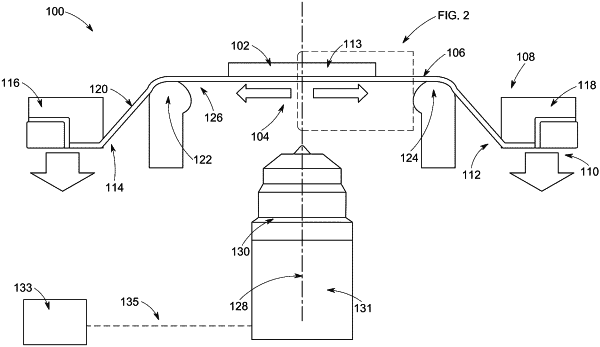| CPC G01N 1/06 (2013.01) [G01N 1/312 (2013.01); G01N 3/08 (2013.01); G01N 35/00009 (2013.01); G01N 2035/00019 (2013.01)] | 20 Claims |

|
1. A system for determining a stretch condition of a biological tissue, the system comprising:
a free-standing composite layer configured to receive a tissue sample of the biological tissue, the free-standing composite layer having a first surface, a second surface that is opposing to the first surface, and two opposing ends, the free-standing composite layer including
a flexible membrane extending between the two opposing ends,
a plurality of fiduciary markers interspersed with the flexible membrane, and
an adhesive area extending at least a portion of the first surface, the adhesive area configured to receive with a no-slip interface the tissue sample; and
a stretching device including
an indenter having a plurality of inner points configured to contact the second surface of the free-standing composite layer, and
a rim aligned with the indenter along a central axis, the rim having a plurality of outer points configured to contact the first surface near the two opposing ends of the free-standing composite layer, the plurality of outer points being farther from the central axis than the plurality of inner points;
wherein at least one of the indenters and the rim is movable to cause an uniform equibiaxial mechanical stretch of the free-standing composite layer and the tissue sample.
|